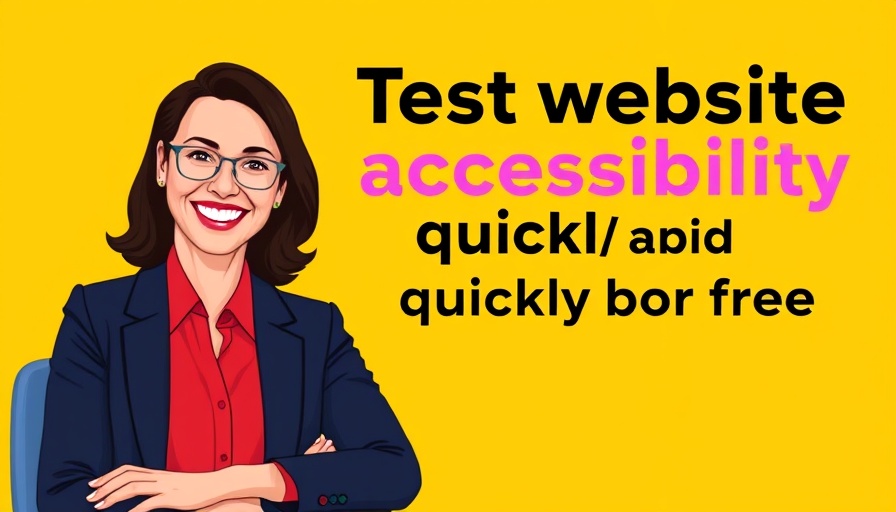
Understanding Website Accessibility for Modern Businesses
As we venture further into a digital age where strong online presences are crucial, understanding the concept of website accessibility has never been more vital for business owners and facility managers alike. Accessibility not only ensures compliance with legal standards but also opens doors to a wider customer base, affirming a company’s commitment to inclusivity.
The Importance of Accessibility in Commercial Construction
For those in the commercial construction sector, having a website that meets accessibility standards can dramatically enhance your visibility and customer engagement. It is estimated that over 60 million Americans live with a disability, and making digital spaces welcoming to this audience can significantly improve your market reach. This is especially important for businesses aiming to serve diverse communities, including social and health-conscious entities.
Legal Compliance: Understanding Your Obligations
Recently, various legal frameworks, including the Americans with Disabilities Act (ADA), have emphasized the need for digital accessibility. Failing to comply can lead not only to lost customers but also legal challenges that can affect a company’s bottom line. Business owners must stay diligent about these regulations not just for protection against lawsuits, but to reflect corporate social responsibility.
Cost Considerations: Investing Wisely
Many businesses worry about the costs associated with making their websites accessible. However, the investment can yield significant returns. A study highlighted that accessible designs often result in higher user satisfaction, which can lead to increased customer loyalty and sales. Beyond just the initial changes, inclusive design tends to reduce costs in the long term by streamlining updates and maintenance.
Step-by-Step Guide to Improving Website Accessibility
To make your website accessible, start with thorough audits using tools such as WAVE or Lighthouse, which can highlight specific areas for improvement. Consider factors like text size, color contrast, and compatibility with screen readers. Engaging with local experts in web design can also provide tailored insights that directly address the unique needs of your business and consumers.
Engaging Your Community Through Accessible Design
Creating an accessible website does more than meet legal requirements; it fosters community relationships. By prioritizing accessibility, you send a powerful message that your business cares about everyone in the community, potentially drawing in partners, investors, and clients sharing the same values.
Final Thoughts: Your Call to Action
The digital landscape is changing, and the demand for accessible websites will only grow. Don’t wait until compliance becomes a legal imperative; start making changes today. The commitment to accessibility can differentiate your business in a competitive market and build lasting relationships with clients. Take action now to review your website, involve stakeholders in the process, and encourage feedback from users to continually enhance accessibility.
 Add Row
Add Row  Add
Add 




Write A Comment